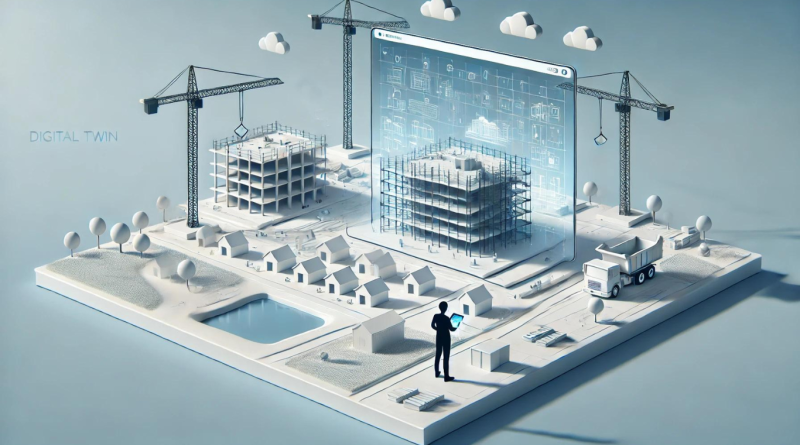Top 5 Benefits of Digital Twin Technology Revolutionising Construction
Digital twin technology is transforming industries, and construction is no exception. But what is a digital twin? At its core, a digital twin is a virtual replica of a physical asset or system, such as a building, infrastructure, or equipment, which is dynamically updated with real-time data. This powerful technology allows construction professionals to create a digital mirror of their projects, enabling them to visualise, simulate, and analyse various components throughout the asset’s lifecycle.
The use of digital twin technology in construction is revolutionising how projects are planned, built, and managed. Below are five transformative benefits of implementing digital twin technology in construction.
1. Enhanced Project Visualisation and Simulation
One of the most significant advantages of digital twin technology in construction is its ability to enhance project visualisation and simulation. Unlike traditional 2D blueprints or static 3D models, digital twins offer dynamic, real-time models that evolve with the project. This provides stakeholders with a comprehensive view of the construction process, from the design phase through to completion and operation.
Moreover, advanced 3D visualisation enables clients to “experience” the project before it’s built. This fosters better client engagement, offering a tangible preview of the finished structure and ensuring that expectations are met, if not exceeded.
2. Improved Collaboration and Communication
Construction projects often involve numerous stakeholders, including architects, engineers, contractors, and clients. Digital twins technology significantly enhances collaboration by providing a unified platform where all parties can access the same real-time data and insights. This centralisation of information minimises misunderstandings, enhances communication, and ensures that everyone is aligned on the project’s progress.
Decision-making becomes more data-driven. Stakeholders can collaborate on simulations to test various construction approaches, identify risks early, and agree on the best course of action.
3. Better Predictive Maintenance and Asset Management
Digital twins are not only valuable during the construction phase, but they also offer immense benefits for long-term asset management. Once a building or infrastructure is completed, the digital twin continues to function as a live model that tracks the asset’s performance over time. This makes it easier for facility managers and building owners to monitor and manage operations, maintenance, and repairs.
Additionally, by integrating with Building Information Modelling (BIM) systems, digital twins ensure that accurate information is always available for future renovations or upgrades.
4. Increased Efficiency and Reduced Costs
Digital twins contribute to significant cost savings and increased efficiency throughout the construction lifecycle. By allowing real-time analysis and simulation, construction teams can identify potential issues early on, reducing the likelihood of costly errors during the build phase. The insights gathered from digital twins enable better resource allocation, helping to minimise material waste, optimise labour costs, and streamline workflows.
Digital twins provide the ability to track inventory, materials, and equipment in real time, ensuring that resources are used efficiently and on schedule.
5. Sustainability and Environmental Impact Reduction
Sustainability is becoming a top priority in construction, and digital twin technology is playing a crucial role in helping the industry reduce its environmental footprint. By optimising resource use, improving energy efficiency, and minimising waste, digital twins contribute to greener building practices.
The real-time data provided by digital twins also helps construction teams track and reduce waste during the building process. By having precise insights into material usage and construction progress, teams can prevent over-ordering materials, reducing excess waste that would otherwise end up in landfills.
